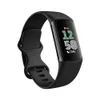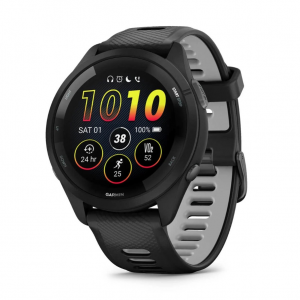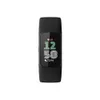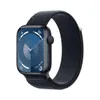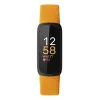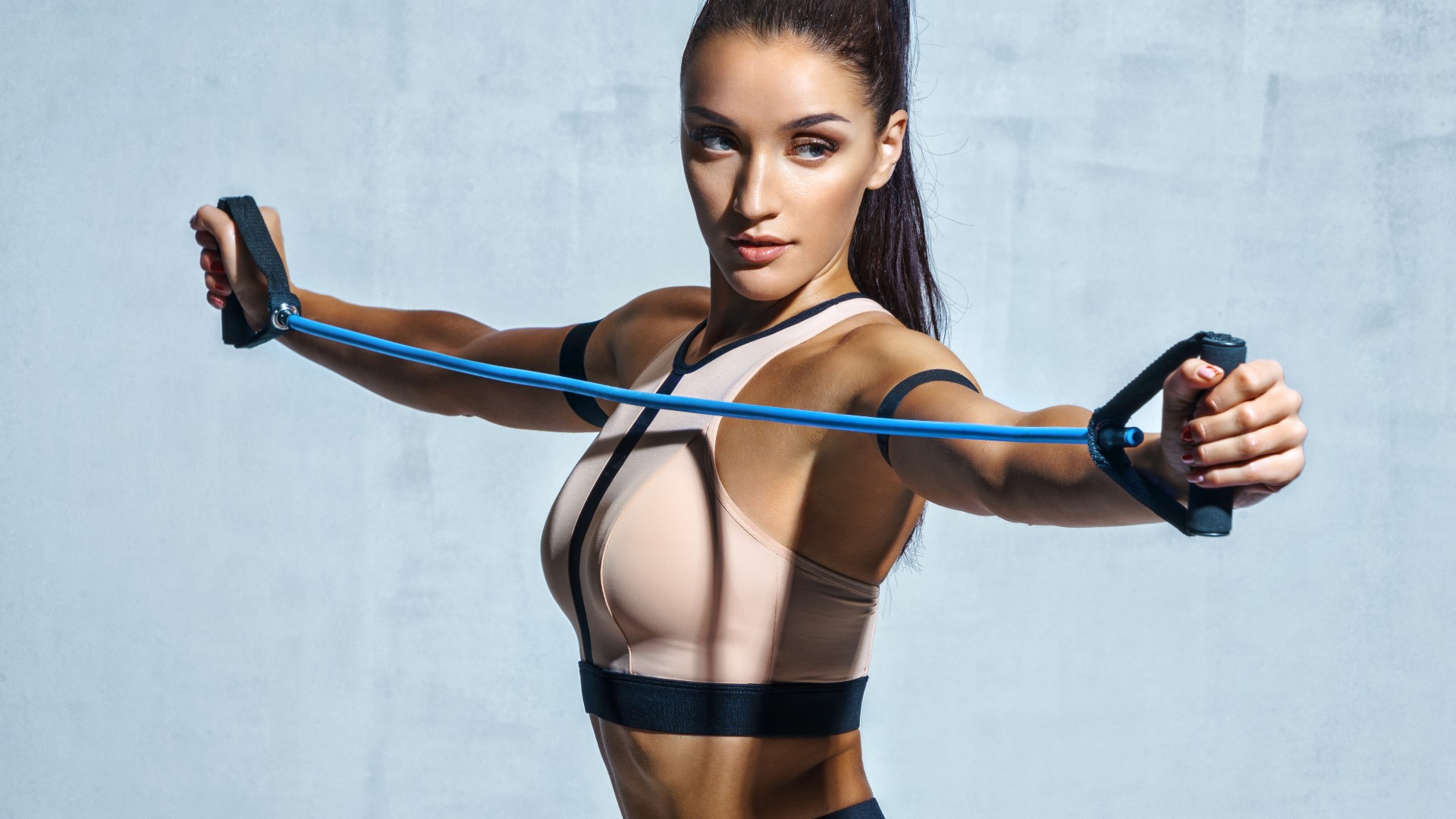
Build stronger biceps using a medium- to heavy-duty resistance band and the five arm exercises below.
If you haven’t shopped around for your bands just yet, we’ve tested the best resistance bands on the market to help you decide, along with the types you’ll need for different workouts.
These biceps exercises can help strengthen and define your arms, but remember, you’ll need to think about more than that if bulk and shape are your goals. Diet and lifestyle matter, too, including how much protein you need to build muscle, getting enough sleep and consistent exercise that progressively overloads your muscles over time. In short, busting out some biceps exercises in the gym won’t do much good unless you follow these basic principles.
Which type of resistance band is best?
If you’ve ever wondered whether or not resistance bands work, don’t write them off as a last resort — there are benefits.
As a general rule of thumb, we recommend a lighter band to build muscular endurance in your arms. That way, you can go for more reps and sets. To focus on building stronger muscles and overloading them, aim for a thicker band that offers more resistance and intensity and program fewer reps.
Learning the basics of hypertrophy versus strength training can help you decide the best exercise program for your goals, including how often you should train, sets, reps and rest for building endurance, strength, or muscle. And no, you won't train the same way for all three.
5 biceps exercises you can do with a resistance band
Add these to your routine or try them as a five-move arm workout by following the sets and reps below.
Sign up to get the BEST of Tom's Guide direct to your inbox.
Get instant access to breaking news, the hottest reviews, great deals and helpful tips.
Resistance band biceps curls
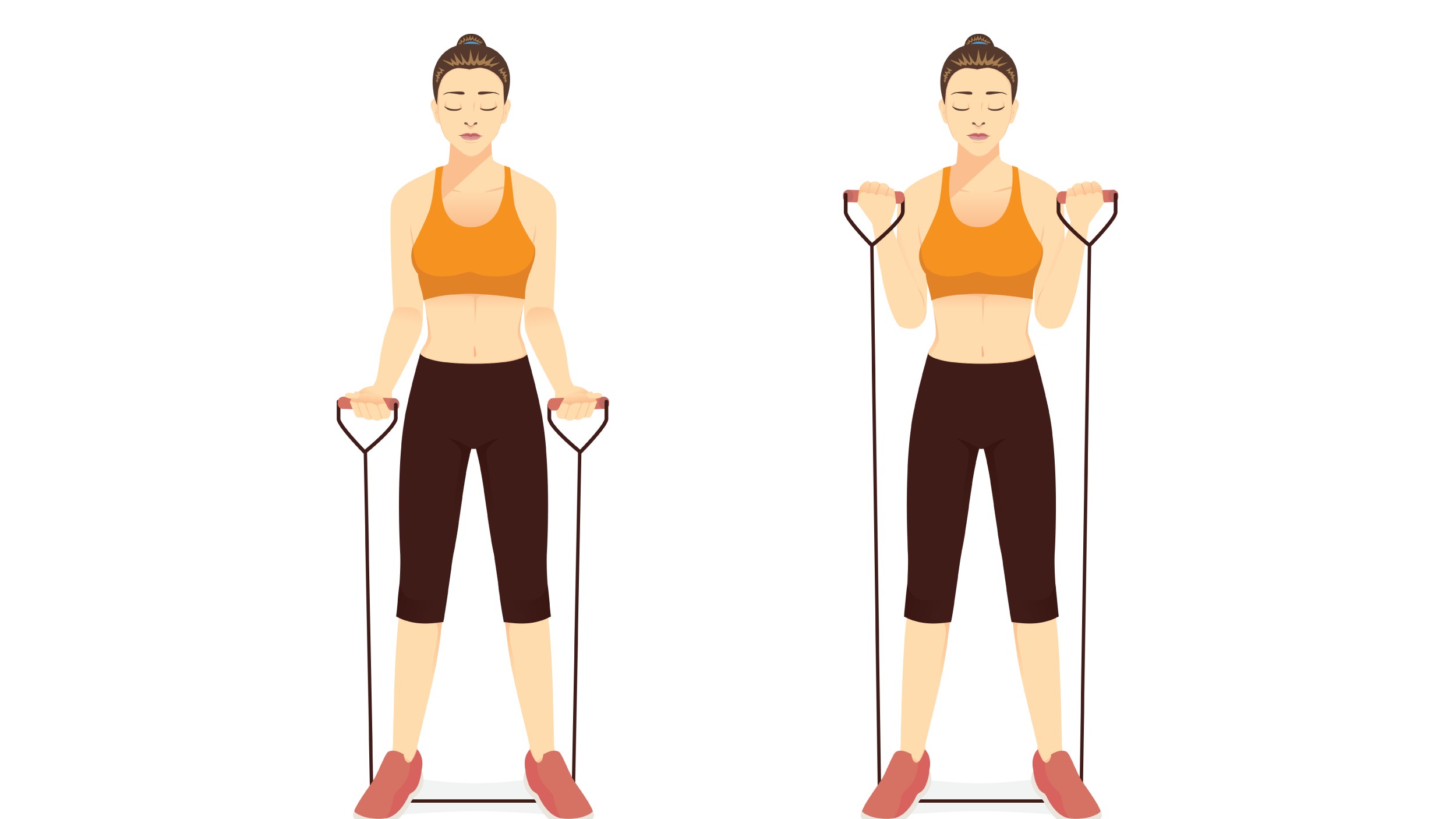
Use a looped or open band with handles to perform your biceps curls. Stand on your band with feet hip-width apart and hold the other end using an underhand grip. Stand tall, engage your core and keep your back straight, then bend your elbows and drive the band toward your chest, keeping both elbows close to your body. Pause, then slowly lower your arms to the starting position.
Stepping your feet further apart or double-wrapping the band will help increase resistance and target that muscle peak (the famous bulge you see when someone has honed their biceps).
3-4 sets x 8-12 reps
2. Resistance band hammer curls
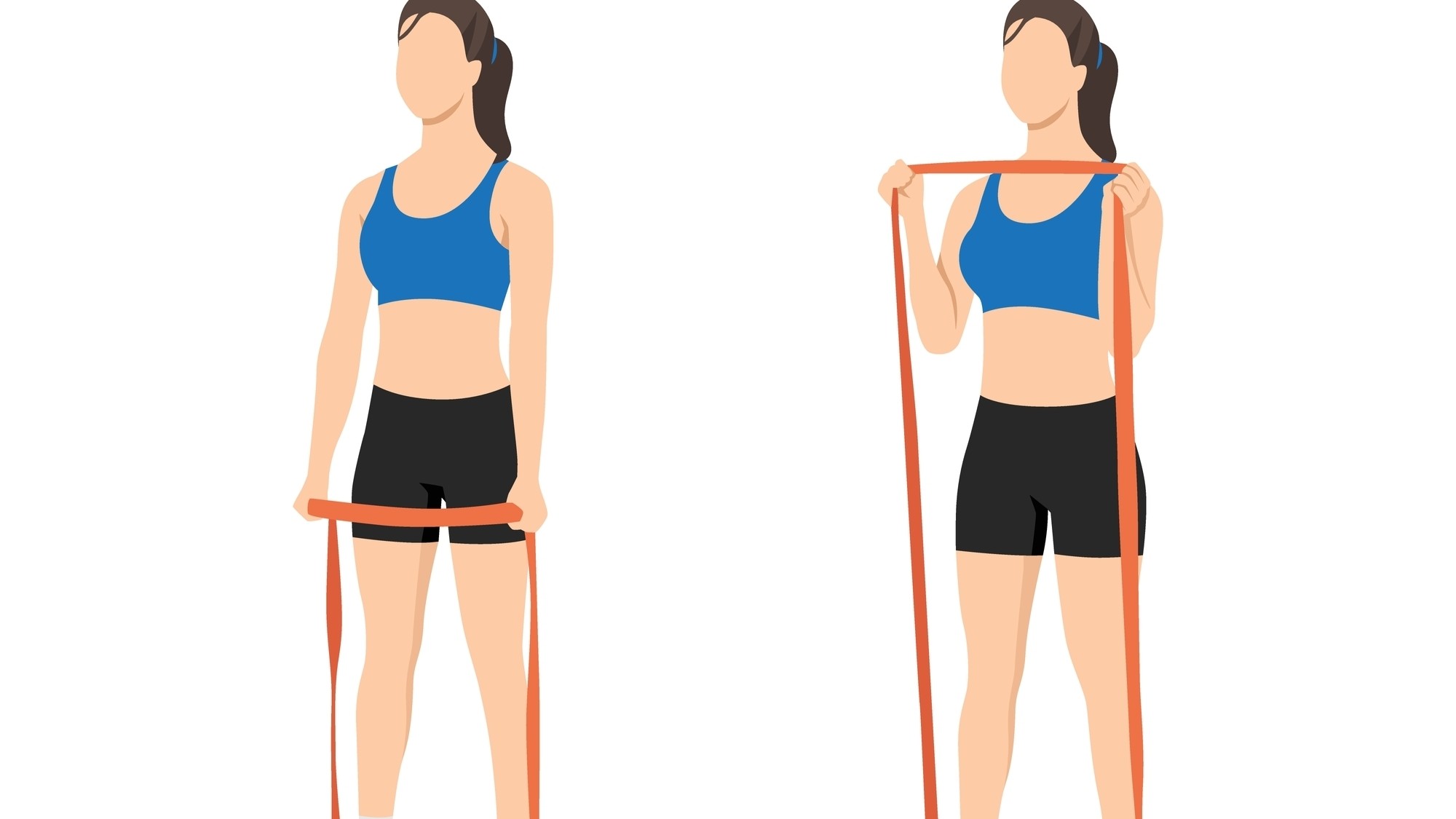
Follow the same method as above, but this time, position your hands in a neutral grip with palms facing each other to nail the hammer curl and build stronger biceps. Draw your hands toward your shoulders as you pull against the band, pause, then lower your arms again.
A simple change in hand position switches the emphasis on the muscles, targeting more of the long bicep head, brachialis and brachioradialis (forearm muscles).
3-4 sets x 8-12 reps
3. Band assisted pull-ups
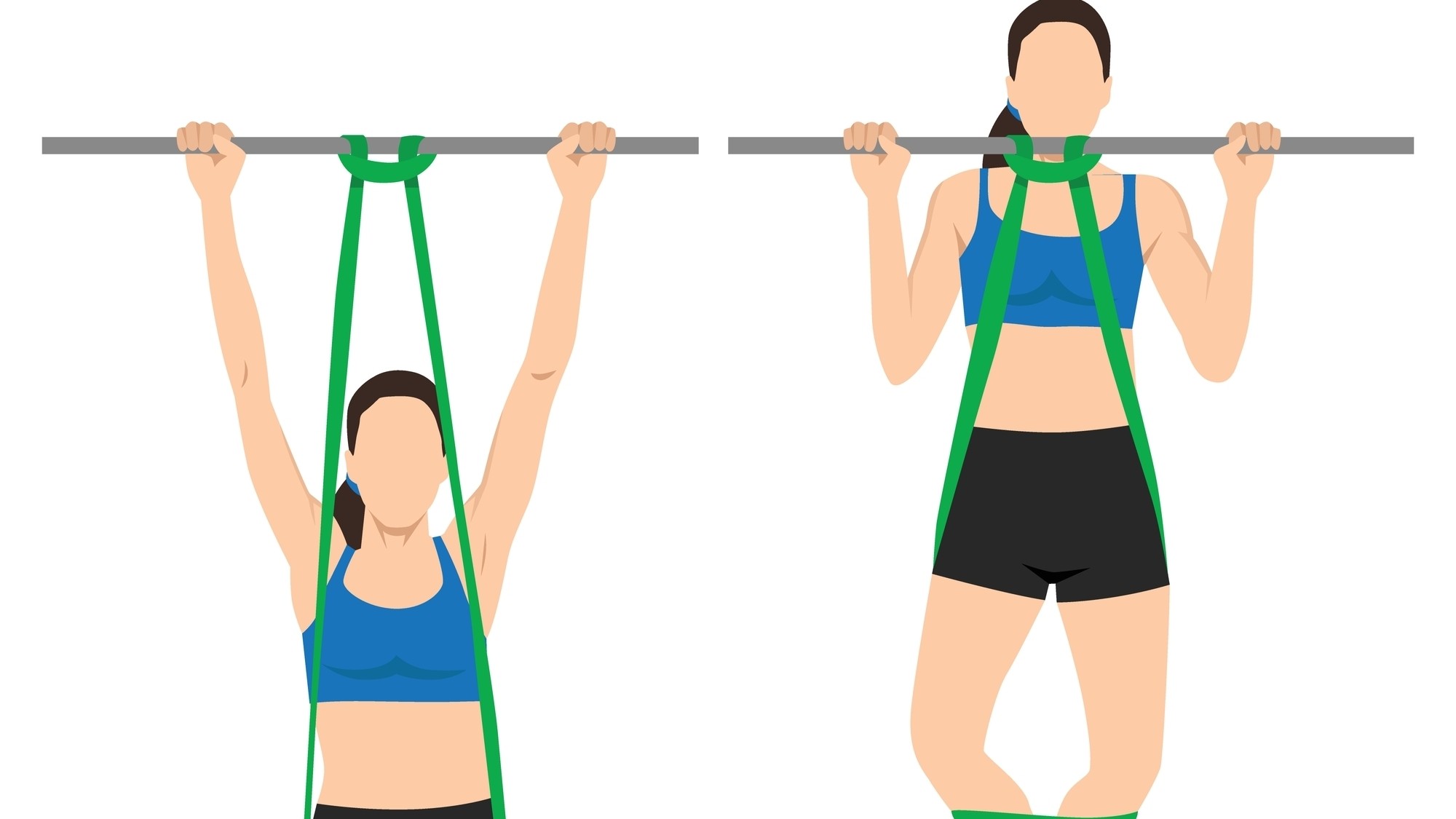
Wrap a looped resistance band around a pull-up bar (or similar) and step your knee or foot through it. In this case, the thicker the band, the more support you’ll get from the band and the easier the exercise will become.
Wrap your hands around the bar, including your thumbs, using an overhand grip and positioning them shoulder-width apart. Hang from the bar with both arms extended, brace your whole body, then pull your body weight upward, lifting your chin above the bar. Pause, then lower yourself down and extend your arms. Keep your stomach and legs braced throughout without swinging your legs.
Although pull-ups are considered a back exercise, your biceps heavily assist with the movement. We recommend learning the difference between chin-ups and pull-ups and common pull-up mistakes to help you master the correct form. Pull-ups also emphasize the posterior chain muscles, like the latissimus dorsi, teres major, posterior deltoids, trapezius and core muscles — plenty of reasons to try them.
3-4 sets x 8-12 reps
4. Banded preacher curls (seated)
Preachers target the short head of the biceps brachii, also working the brachialis and brachioradialis. If you can, use a band with handles and secure the tube of the band under the door using a door anchor or around a squat rack (basically, anything stable and non-moving).
Sit on the ground facing the door and shift back until the band is pulled tight, with your knees bent, feet planted on the ground and elbows resting on your knees. Extend your arms and grip the handles or band using an underhand grip. Slowly bend your elbows and pull the band toward your head. Pause, then lower your arms to the starting position.
Brace your stomach, move with control and avoid hunching your shoulders.
3-4 sets x 8-12 reps
5. Resistance band reverse grip curls
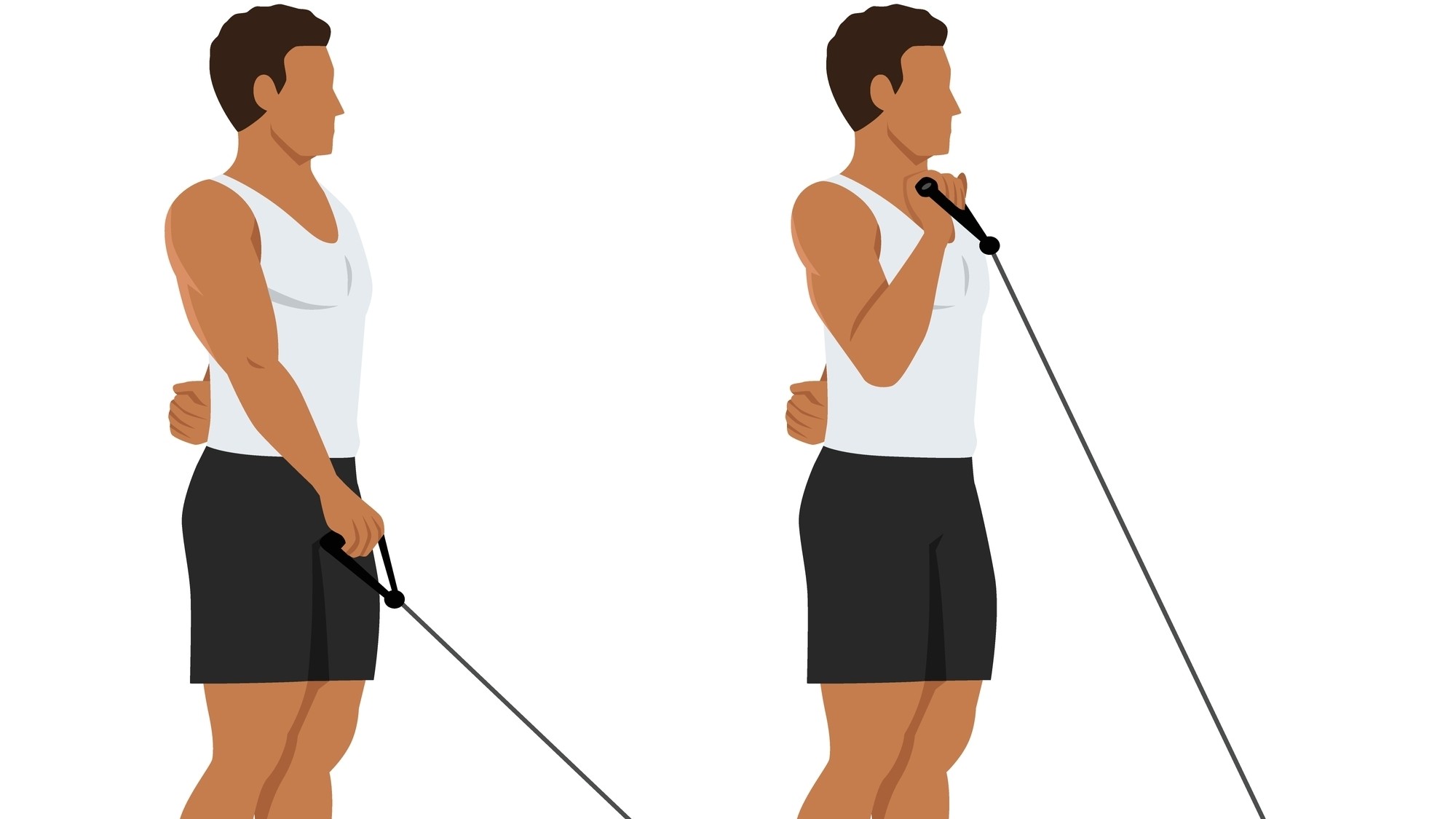
As the name suggests, simply reverse your grip as you curl the band and you’ve got yourself reverse curls. Follow the steps above, but use a pronated grip (palms facing downward toward the floor). The move emphasizes the forearms (the brachioradialis) but it’s easy to flex or overextend the wrists as you drive the band upward, so focus on keeping your wrists neutral as you move.
3-4 sets x 8-12 reps
Bottom line
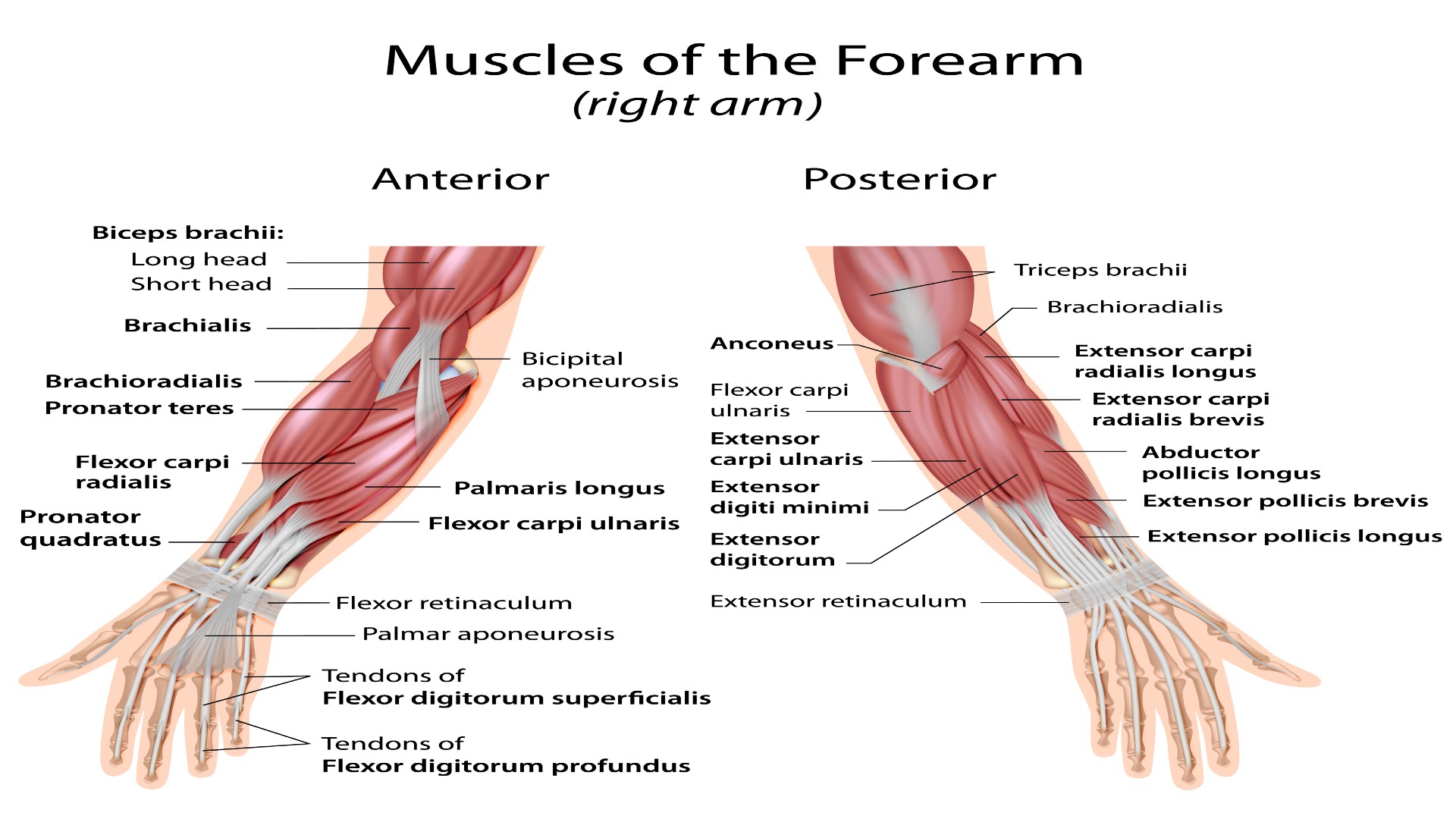
Your biceps assist during pulling, elbow flexion, forward shoulder flexion and wrist supination motions. The biceps brachii muscles have two heads — short and long — and your elbow and shoulder positioning can influence how these muscles are targeted and how active they are.
Alongside the biceps brachii, the brachialis (the primary forearm flexor) and brachioradialis (another forearm muscle), also form the active muscle groups during these exercises. When programming to build your biceps, think about all the muscles in the arms that sculpt and shape them.
Compared with large and powerful muscle groups like your lats, glutes, or quads, the biceps are relatively small, which means they can be more easily overloaded using bands. You can also create resistance during both phases of an exercise — concentric and eccentric contractions — using bands, keeping tension in the biceps at all times as you flex, pause and extend.
The constant tension in the muscles using resistance bands can increase muscular activation, keeping engagement constant through the full range of motion. And just like using dumbbells or kettlebells, you can choose different types of resistance to suit your ability.
If you don’t have access to multiple sets of bands, there are other ways to build muscle without lifting heavy weights, including playing with variables like sets (drop sets, supersets, or giant sets, for example), reps, or rest. Try to resist using momentum like swinging while using your bands and control each movement as you lift and lower your arms.
For an even spicier workout, try tempo training; this means slowing each portion of the exercise down to the count of three to five seconds to increase tension through the arms.
More from Tom's Guide
- Forget the gym, this 30-minute walking workout builds mental strength and boosts your metabolism
- This 15-minute arm workout builds your triceps, pecs and shoulders in 15 moves
- Build a stronger core and boost your balance with this 25-minute standing abs workout

Sam Hopes is a level 3 qualified trainer, level 2 reiki practitioner and senior fitness writer at Tom's Guide. She is also currently undertaking her Yoga For Athletes training course. Sam has written for various fitness brands and websites over the years and has experience across brands at Future such as Live Science, Fit&Well, Coach, and T3.
Having worked with fitness studios like F45 and Virgin Active, Sam now primarily teaches outdoor bootcamps, bodyweight, calisthenics and kettlebells. She also coaches mobility and stretching-focused classes several times a week and believes that true strength comes from a holistic approach to training your body.
Sam has completed two mixed doubles Hyrox competitions in London and the Netherlands and finished her first doubles attempt in 1:11.
